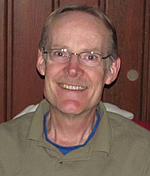A not-so-simple question
By Francis Eberle
Posted on 2010-11-23
With the NSTA delegation to the Sino–US Science and Education Forum back in the U.S., I am sure each member will be asked what I have been asked several times since returning home. “How was China?” This may seem to be a simple question. China is a place of contrasts: the new and the old China; rural and urban China; educated and non-educated China. During the trip I finished a book called Country Driving; A Journey Through China From Farm To Factory, and I may have blurred my thoughts with those of the book’s author, Peter Hessler. But in this final reflection I want to tell you in advance that I will use some of his thoughts to illustrate my overall impressions. I welcome your thoughts too.
From a science education perspective China’s goals and efforts to secure a quality science education for students are similar to ours. They want more inquiry used in classrooms, more high quality materials, and more qualified instructors. These are critical to improving science education, but the scale in China is enormous. The impression you get is they are not close to achieving these goals right now.
The advantage they do have is something that at times seems lacking in the U.S. The Chinese have aspirations for a systematic approach to improve what they are doing. I believe this is one of the purposes for inviting NSTA to their country to build relationships and to improve their science education process. Education is the route to success. After he slept in a fourth grade classroom in the rural town of Xiakou, Peter Hessler found the following quotes on the walls: Study hard so China can rise up; A man with knowledge turns into three heads and six arms; and men and machines are the same if they keep moving, they don’t rust.
They have a long way to go to improve their science education system, but they do seem determined. The tour guide told us that twenty years ago the city of Shanghai had only one building that was higher than 30 floors, and now there are 128 buildings over 30 floors in just one neighborhood of Shanghai. There are many neighborhoods in Shanghai. They are growing whether they want to or not.
Part of my lesson from this trip is to find ways to use the influence of NSTA to improve the focus on the U.S. government on science education here. And you can help by contacting your state representative(s). This process is very different from the Chinese approach, and I still think it is better even though slower. We need to speak up. After what our delegation saw and learned, we cannot stand still, because China is certainly not standing still.
Addendum—17 December 2010: NSTA Press author Steve Rich was part of the U.S. delegation in Shanghai and has shared his reflections about his experience in China.
Disclaimer: The views expressed in this blog post are those of the author(s) and do not necessarily reflect the official position of the National Science Teaching Association (NSTA).



